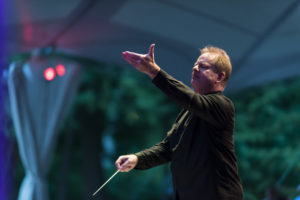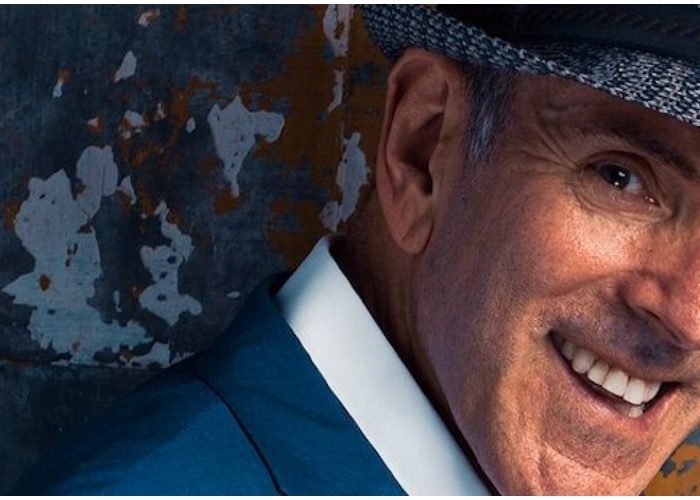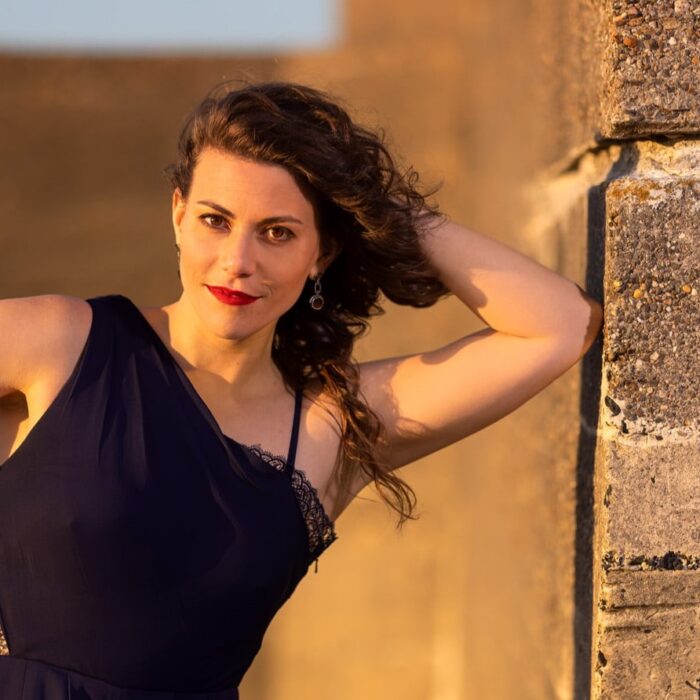
Q&A: Will Crutchfield on His Journey With Bel Canto, His Final Season at Caramoor & His New Program, Teatro Nuovo
By Francisco SalazarIt’s a big year at Caramoor for Will Crutchfield. For the last 20 years, Crutchfield has been a leader in reviving a number of Bel Canto works at the festival through his program “Bel Canto at Caramoor.” It is a program that has showcased some rarities and has shown the conductor’s expertise in the repertoire. However, this year Crutchfield is leaving his tenure with the festival and has announced the creation of a new program, Teatro Nuovo.
OperaWire spoke to Crutchfield about his work at Caramoor, his love for Bel Canto, and how he sees his new program as a continuation of his work at Caramoor.
OperaWire: Tell me about your work with Caramoor. What has it meant to you?
Will Crutchfield: My work at Caramoor has meant the opportunity to delve into Bel Canto outside the limitations of the usual rehearsal process. I love working in theaters and I love the “everything together” of opera, but sometimes you can get farther into the music of a piece in a concert performance and with a surrounding Young Artist program.
And some pieces need that kind of special examination. What I wanted to do at the start was get away from the idea of these Bel Canto operas as interchangeable vehicles for fancy singing. The singing has to be great – in fact, it’s our main focus – but it is a serious language of expression, not an interchangeable batch of fireworks that comes the same way in every opera.
OW: Bel Canto sometimes has a bad reputation for being all about virtuoso singing. How do you view the art form, and what does doing these pieces in concert allow you to discover?
WC: First, that good singing is built from the ground up – simple line, beautiful legato – you can’t start from the spectacular extremes and then sort of fill in around and beneath them. Second, each opera is an individual work with its own atmosphere, and each of the bel canto composers was a particular genius. It is fatal if you think you know a piece simply by seeing its patterns – “here’s the cabaletta, here’s the finale, here’s the duet in thirds, etc.” That is a trap too many fall into.
OW: This year “Il Pirata” is being programmed for the festival. What makes this piece so special, and how do you see it within the Bellini canon?
WC: It is the first collaboration of Bellini with the poet Romani, and they made one of opera’s most important teams, like Mozart with Da Ponte. It’s a heartbreaking story – everybody is doomed to unhappiness, and the beauty and sympathy with which Bellini and Romani show their suffering is transcendent. They were helping to invent what we think of as Romantic opera. Bellini wanted people to “suffer, tremble, and die singing.” Who wants to suffer, tremble and die for an evening’s entertainment? As it turns out, everybody with a heart!
OW: How do you think he developed after this work as a composer, and do you find this piece more compelling than his later works because of its drama?
WC: I think Bellini is one of the most consistent composers in history, actually. Of course, he died young, so we have no idea where he would have gone. He was branching out with some new harmonies in his last opera. I think he learned some of them from Chopin, but his basic gift was fully in place when he wrote “Il Pirata.” I don’t think it sounds at all “early.” The proportions, the long, long lines, the infinite melancholy and the sense of atmosphere – he had accomplished this with confidence in all those things already.
OW: How do you think his work differs from that of Rossini and Donizetti and even some of his contemporaries like Mercadante?
WC: Donizetti was definitely a developer. He started out, in operas we rarely revive, dozens of them, by training himself to produce pure imitations of Rossini. Like a painter copying old masters to develop the skill of his hand. His own voice emerged more gradually.
When it did emerge, he was constantly looking for ways to tighten the structures, to introduce surprises, to sacrifice some of the symmetries in favor of immediacy. Bellini didn’t really do that. He was content with the structures and had a very individual kind of music to fill them with. Donizetti leads towards Verdi. Bellini leads towards Wagner.
Of course, there are millions of details that a summary doesn’t capture, but you could say that Donizetti moved in the direction of dramatic contrast and flexible timing, while Bellini was always looking to go deeper into pure expression.
Rossini himself was an incredible master of rhythm and architecture. He pulled together whatever materials were around at the turn of the century, shaved them down to clean, symmetrical shapes, and built fantastically intricate combinations, always with logic and almost mathematical perfection of balance. And what holds them all together is his sheer rhythmic energy. So everything in Italian opera down to “Otello” and “Falstaff” depends completely on these master plans, these diagrams, created by Rossini back in the 1810s. It says a lot about him that they served for so long.
OW: This year Angela Meade will be the artist in residence with the festival. Why do you think she is the perfect fit for the Bel Canto repertoire?
WC: Angela has a truly grand voice, a voice for big theaters, that is at the same time truly lyrical and beautiful. Its prime characteristic is beauty, yet it can branch out to be biting or harsh when she needs it to, and it can go to the extremes of her range without losing beauty. That makes her rare.
OW: What has it been like working with her throughout the years she has been at Caramoor?
WC: First of all, it’s easy to conduct with her because you never have to worry about when she has to breathe. As the Italians say, “respira a casa.” She breathes at home. There are times I can’t help smiling in a rehearsal, because I think, “Oh, she forgot to breathe, we’ll have to figure something out,” but no! She just goes on and finishes the next phrase without trouble!
And to get technical, that means she has a really high level of coordination between the muscles of sound-making and the muscles of breathing. Singing is as much athletic as it is artistic – both are fantastic challenges to the human spirit. The athletic accomplishment makes possible the expressive accomplishments.
OW: Caramoor has also been a ground for developing young singers. Why do you think Bel Canto is so important for young singers, and do you think it helps with their technique in the future?
WC: Bel Canto requires a singer to understand what’s going on in detail. More than later music, more than declamatory music, it requires you to have control of exactly when and how your voice goes from one pitch to another, exactly how you start a note, exactly what volume it has in relation to the next one. Working that way gives you a better-functioning machine. You can’t get by with approximations or trusting to luck.
The singer who can truly do everything required in the Bel Canto repertory can do everything in all repertory. That sounds like an exaggeration, but I mean it literally.
OW: This is your last year at Caramoor. What will you miss, and why did you make the decision to form Teatro Nuovo?
WC: The program reached a point at which it couldn’t grow within the structure of a mixed festival, and also, of course, opera is very expensive, so there is always the possibility that some people will think too much money is being devoted to it. With Teatro Nuovo, all the donors are giving for the same reason and the purpose is clear.
So we will be able to do more performances of more works in a single-purpose festival. I will miss the beautiful gardens! But at the same time, I’m looking forward to doing our performances in beautiful indoor theaters and not worrying about whether it will rain!
OW: What do you take away from your years with the festival, and what can audiences expect from Teatro Nuovo?
WC: We’ve learned a lot in these 20 years, and there is also a more general exposure to Bel Canto operas for the New York public now, compared to 1997. So I think we’re all ready for a next step. Of course, we’re going to keep faith with our longtime Caramoor public, and after all the fantastic SUNY Purchase theater is quite nearby. But we will be more adventurous in repertory. We are starting off with a very important composer, Mayr, that we never got to at Caramoor. Some Mercadante is planned as well, and probably Carlos Antonio Gomes. These are composers really needing revival.
Mayr was Donizetti’s teacher and lifelong friend and wrote something like 60 or 70 operas. His biggest successes held the stage for decades. And studying his scores, it is easy to see why. I think he was forgotten simply because he came just a little before Rossini and Rossini was the path of the future, but Mayr stands in his own right as a great contributor to this tradition.
Also, we’re expanding the training program to give more mainstage opportunities to our young singers, and we’re going to be training orchestral players as well. Bel Canto has a lot to do with the concerto tradition and instrumentalists need to know it, too.
OW: Why do you think audiences need to hear some of these unknown works?
WC: I think hearing a masterpiece you didn’t know before is like forming a new friendship. Every one is unique, and people who are devoted to opera understand this. They want those new acquaintances, just as they also want to go through life with their old acquaintances at their side. Each new work you get to know changes your life, and changes you, in some way.


